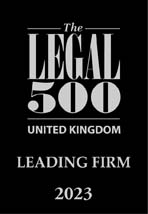[spb_text_block pb_margin_bottom=”no” pb_border_bottom=”no” width=”1/1″ el_position=”first last”]
For many of us, Christmas 2015 will be remembered as that time we binge watched Making a Murderer on Netflix.
The ten part documentary provokes a wide range of emotions rarely experienced whilst watching telly.
The subject of the documentary is Steven Avery, a man from Manitowoc County USA who spent 18 years in prison for a sexual assault that he did not commit.
Two years after his release from prison in 2005 and after he had filed a $36 million federal lawsuit against the county and named individuals responsible for his wrongful conviction, he was arrested for murder along with his sixteen year old nephew Brendan Dassey.
The documentary covers a decade of legal battles, from Avery’s arrest and conviction of murder to present day.
Filmed in a “fly on the wall” style where the viewer gets to experience things such as police interviews, examinations of alleged crime scenes, visits to crime labs and we get to see important parts of court proceedings relating to the case.
The documentary highlights the open and accessible justice system which prevails in the US. In England and Wales such an open justice process does not exist.
A long-standing ban on cameras in court rooms was partially lifted in 2013 meaning that cameras were permitted in the Court of Appeal. However, the ban still applies in crown and magistrates’ courts. Where cameras are allowed, stringent restrictions apply and only footage of lawyers and judges is permitted.
Furthermore, court transcripts are destroyed after five years unless they have been placed under a preservation order. Once destroyed, the important verbatim record of what was said in court is lost forever. Likewise, defence solicitors’ files are destroyed after a period of six years unless they have been claimed by the defendant or passed on to another party. Those working with criminal appeals in England and Wales are left to piece together a case, and find the new evidence needed for an appeal, from a stale and fragmented mess often consisting of police interviews, statements and reports given prior to trial, and the judge’s summing up and sentencing remarks. This is highly problematic.
[/spb_text_block]





